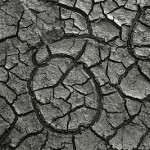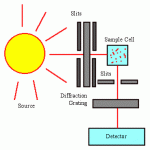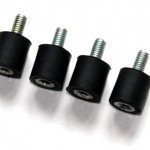Before 1982, the penny was made of copper which is why they, unlike most other coins, don't look silver. However, after 1982, the U.S. government realized that it was too expensive to make a penny–more than the penny was worth in money–so they decided, instead, to make it with a mixture of two different metals. Nearly ninety nine per cent of the penny is made of zinc while the other per cent (at most) is made of copper. How a Penny is Made Sheets of copper are laid out and Read More
Silicone Grease
Silicone grease is made when a thickener is combined with silicone oil in order to create a waterproof grease. The most common thickener used to make this grease is amorphousfumed silica with polydimethylsiloxane as the silicone oil. The resulting mixture is a translucent, viscous, white paste that has lubrication properties depending on the exact formula used to create the grease. Silicone grease has a wide range of uses in both the appliance and automotive industries. It is not suitable for applications that experience temperatures exceeding 300 degrees Fahrenheit because it Read More
What is Acidic Soil?

Soil is classified as acidic or alkaline based on its pH value. pH is basically a measure of the acidity or alkalinity of a solution. Technically, it is the measure of the hydrogen-ion concentration in the soil. pH is measured on a scale of 1-14, with 7 being the neutral mark. If the soil hits any value below 7, it is considered acidic, and any value above 7 denotes alkalinity. Assessing soil pH is very important for farmers and gardeners, as it helps them choose the right kind of plants Read More
Fluorescence Spectroscopy

In the field of spectroscopy, fluorescence can be analyzed from a sample of material through a special form of electromagnetic spectroscopy. This fluorescence spectroscopy uses a beam of light that is tailored for the type of fluorescence detection needed in compounds. The usual option is an ultraviolet light that is used to excite electrons in the molecules. This causes them to produce a light emitting phenomenon of lower energy, which can be within the visible and non-visible light spectra. A complimentary technique that is often used with fluorescence spectroscopy is Read More
What Causes Copper to Turn Green?
Copper turns green because of a process known as oxidation which is the removal of electrons from the substance. Specifically, copper turns green because of something known as copper carbonate. This is the substance that is found on top of copper–whether they be copper pipes, pennies, statues or anything else. So, the cause of copper turning green is copper carbonate. However, the big question is: why does copper carbonate appear? When a metal comes into contact with air or water, it undergoes environmental changes. In other words, it might rust Read More
Methyl Ethyl Ketone
Methyl ethyl ketone (MEK) is also known as butanone. It is a colorless liquid and has a sweet, sharp odor that smells similar to butterscotch and acetone mixed together. The compound is organic, but must be produced industrially. The substance rarely occurs naturally. Methyl ethyl ketone is primarily used as a solvent in nature. How is Methyl Ethyl Ketone Produced? The primary way to produce methyl ethyl ketone in industry is to oxidize 2-butanol using a catalyst based from bronze, zinc, or copper. Another way to produce the substance is Read More
Potassium Permanganate
Potassium Permanganate is a crystalline compound that is dark purple in color and is used in deodorizers, dyes, disinfectants, and as an oxidizing agent. The chemical formula for potassium permanganate is KmnO4 and it is considered to be an inorganic compound. When dissolved in water, the compound makes the solution turn an intense purple color and creates a purplish-black crystal when evaporated. What Uses Does Potassium Permanganate Have? Potassium permanganate is primarily used for its oxidizing properties in industry. Since it does not generate any toxic byproducts, the compound has Read More
Cadmium Telluride
Cadmium Telluride is one of the most toxic and deadly substances known to man. It is a by-product of lead, zinc, and copper mining and is also naturally found in soil and water. Despite its toxicity, cadmium telluride is still frequently used because it has highly sought after physical and chemical properties. What Are the Properties of Cadmium Telluride? Cadmium telluride has a high resistance to chemicals and corrosion as well as a high tolerance for extreme temperatures. The substance also has a low melting point and is considered an Read More
How Does the Biuret Test Work?
The biuret test is one in which a researcher can determine whether a mixture has peptide bonds in it or not. By using the biuret test, in seconds an individual knows if they are there. Once they know that the peptide bonds are, in fact, there, they can then attempt to measure the amount of peptide bonds in it by using the Beer-Lambert Law. How Does it Work? A small amount of the mixture that is believed to have peptide bonds in it is added to a test tube and Read More
Vibration Dampeners

A vibration dampener is any material that is designed to absorb vibration. People come in contact with vibration dampeners on a daily basis. Some examples are carpeting, foam, rubber, and grass. Vibration dampeners are exceptionally useful in situations where heavy machinery is repeatedly colliding with itself or another surface, especially a floor. Vibration dampeners can be used in both industrial and commercial applications and can be made in various sizes, thickness, and absorption rates in order to fit any situation. How a Vibration Dampener Works Vibration dampeners can be made Read More


Share on: